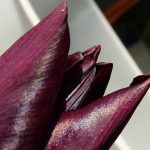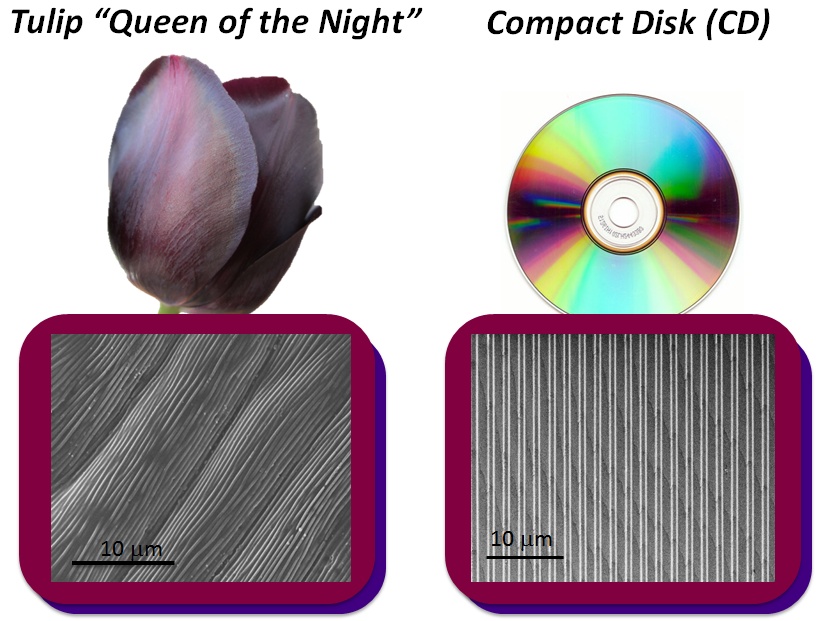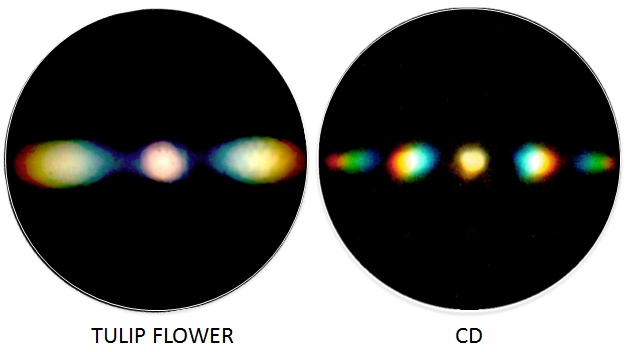Tulip “Queen of the Night”
 Flowers exist in plants to attract pollinators in order to allow reproduction. For this reason flowers have to be bright and colourful and well distinguished from the other parts of the plant like the stem or the leaves. An intense and brilliant colouration is therefore an important requirement.
Flowers exist in plants to attract pollinators in order to allow reproduction. For this reason flowers have to be bright and colourful and well distinguished from the other parts of the plant like the stem or the leaves. An intense and brilliant colouration is therefore an important requirement.
One of the most intriguing ways to make bright colours is by iridescence. Iridescence or “structural” colour is often produced by microscopic repeating patterns on the surface. Iridescent colours are easy to identify because they change when the object is viewed from different angles. An everyday life example of an iridescent object is a CD. The tulip called Queen of the Night presents an iridescence behavior in its petals that it is similar to that seen on a CD. The microscopic surface patterns that cause iridescence can be observed with an electron microscope. Below are microscope images showing the surface patterns on both the CD and Tulip.

The iridescence of the tulip flower is really similar to the one of the CD. In both cases a rainbow of colours is observed due to the presence of the structure on the surface of the petals/CD. The iridescence on this tulip is caused by the lines of cuticle on the epidermal cells acting as a diffraction grating, in just the same way as the data grooves on a CD do.

In the image above you can see white light being split into its component colours by surface diffraction. Notice how both the Tulip and CD produce a series of rainbows due to the regular grooves on their surface which are similar. The grooves are too small to be observed with an optical microscope (< 1 μm) and must be imaged by an electron microscope. For scale human hair has a thickness of between 17 and 180 μm.
For further information look up the scientific papers in the Links page.
